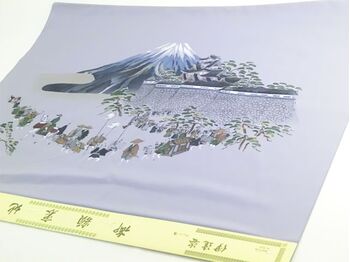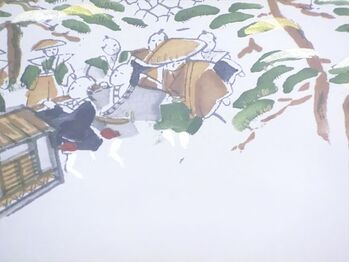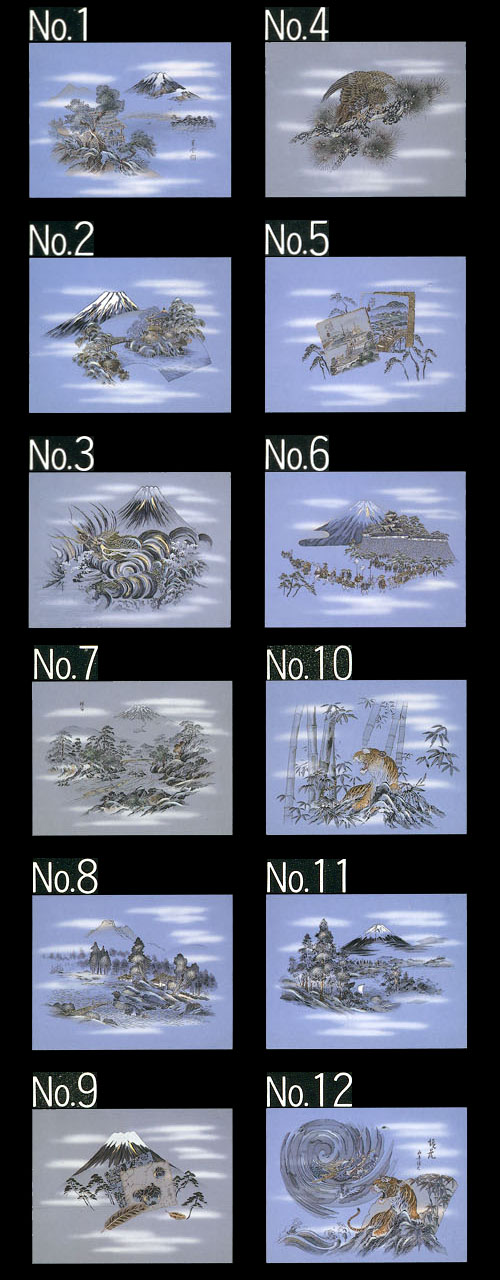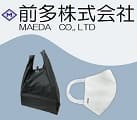 Click on the mark for details.
Click on the mark for details.Daimyo Gyoretu (procession of feudal lords) is a procession taken by feudal lords when they go out with their attendants on official business. A typical example is the procession between Edo (Tokyo) and the feudal domain during the daimyo's daimyo's daimyo's daimyo's official visit. The form of the procession was regulated by the shogunate according to the stone value and rank of each feudal lord's family, and there were also some customs unique to each feudal lord's family.
History
Diagram of a daimyo's procession in the Ushiku domain.
Originally, the daimyo's procession was a warlike and military style of movement, similar to a wartime march (the length of the sword to be worn could be longer than usual, etc.), but as the peace of the Edo period continued, it gradually transformed into a large-scale and elegant event to show off the authority and prestige of the feudal lords. Some believe that the Tokugawa shogunate had a political intention to restrain the economic power of the feudal lords by forcing them to spend money for the daimyo procession, but the original purpose was a ceremony to show obedience to the shogun, and there was a tendency on the part of the daimyo to make the procession large-scale to show their loyalty, clan power, and authority. The number of people in a daimyo's procession for official shogunate business, such as the daimyo's visit to the shogunate, was set by the shogunate and varied slightly from period to period. At its peak, the Kaga domain, which had a domain of 1,020,000 koku, had 4,000 people in the procession.
The long and extravagant processions became a real financial burden for the feudal lords, and gradually put pressure on the clan's finances. If each clan became financially bankrupt and could no longer fulfill its military duties, it would be a complete reversal of the purpose of the daimyo's procession, so the shogunate conversely began to restrict the daimyo's procession.
by Wikipedia
Fabric dimensions: approx. 84 cm (width) X 2.6 m (length)
Material: 100% polyester
The pattern comes on the back part of the haori.
Please note
Most washable picture frames are pigmented, so the color of the pattern will deteriorate after repeated use and washing, and this picture frame lining is no exception.
Also, since it is hand-dyed, there is a possibility that the color may differ from the sample shown in the photo.
Please understand.

- ①「身長」/「hight」
- ②「ヒップ」または「胴回り」/「hip」or 「girth」
…胴囲の一番大きい部分です。
It is the largest part of the waist circumference. - ③「裄(ゆき)」/「Length of sleeve」
…腕を水平から下に30度まで上方に上げて、
首の後ろの骨のあたりから手首の骨まで。
首の骨のぐりぐり(第七頸椎の後ろ)から手首の骨のぐりぐりまで。
Raise your arms up to 30 degrees below horizontal, From around the back bone of the neck to the wrist bone. From the neck bone gouge (behind the seventh cervical vertebra) to the wrist bone gouge. - ④「体重」/「weight」
※襦袢の裄丈は着物の裄丈に対し約5mm短くなります。
*The sleeve length of the juban(kimono underwear) is about 5mm shorter than the sleeve length of the kimono.

お手持ちの着物に合わせた着物や長襦袢を作りたい方は、ご自身の【身長】と、
上記図を参考に、その着物の、【①身丈・②袖丈・③袖幅・④袖付・⑤裄・⑥前幅・⑦後幅】の合計8つのサイズおを教えください。
If you want to make a jyuban(kimono underwear) that matches your kimono, please tell us your [height] and Refer to the diagram above to 【①determine the length, ②sleeve length, ③Length of sleeve, ④Width of the sleeve's seam, ⑤Length of sholder and sleeve, ⑥front width, and ⑦back width】 of the kimono.Please let me know the total 8 sizes.
※襦袢の裄丈は着物の裄丈に対し約5mm短くなります。
*The sleeve length of the juban(kimono underwear)is about 5mm shorter than the sleeve length of the kimono.































